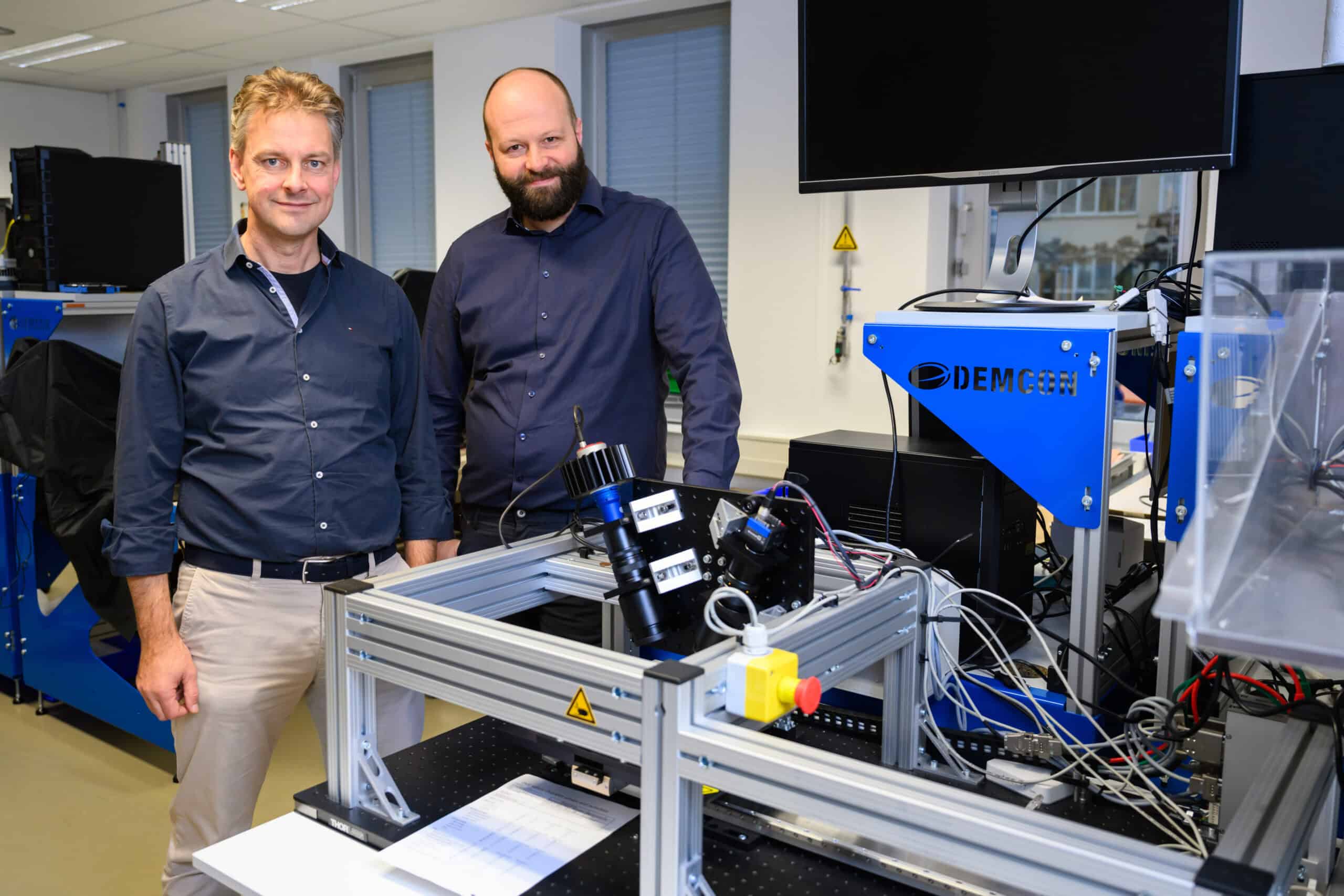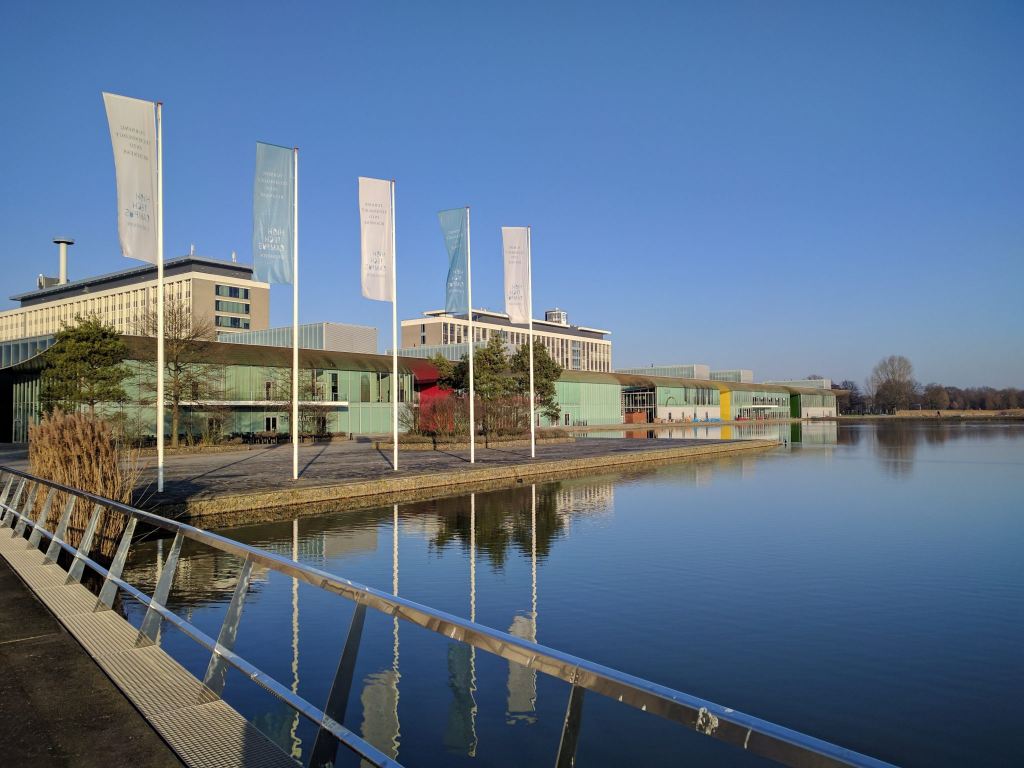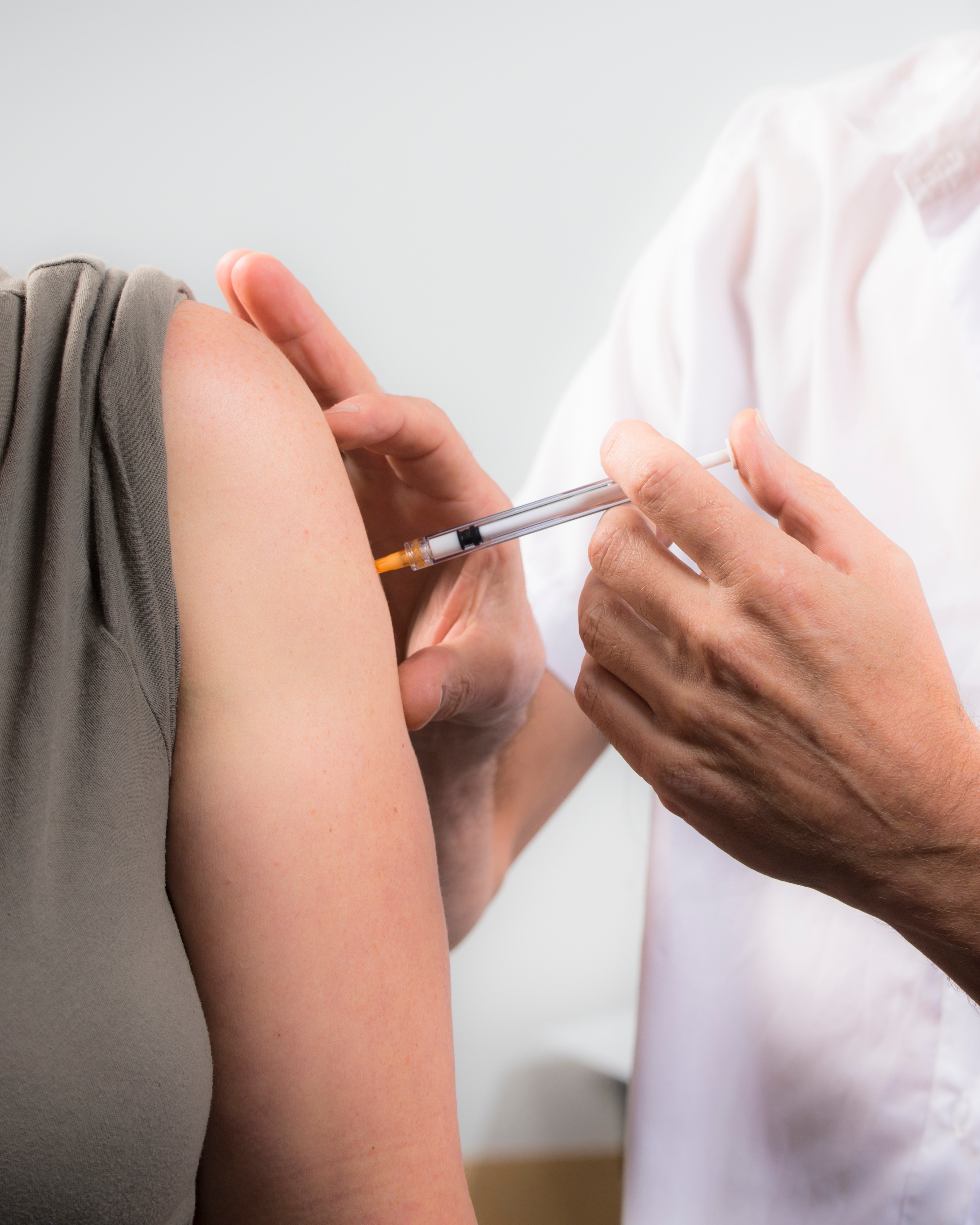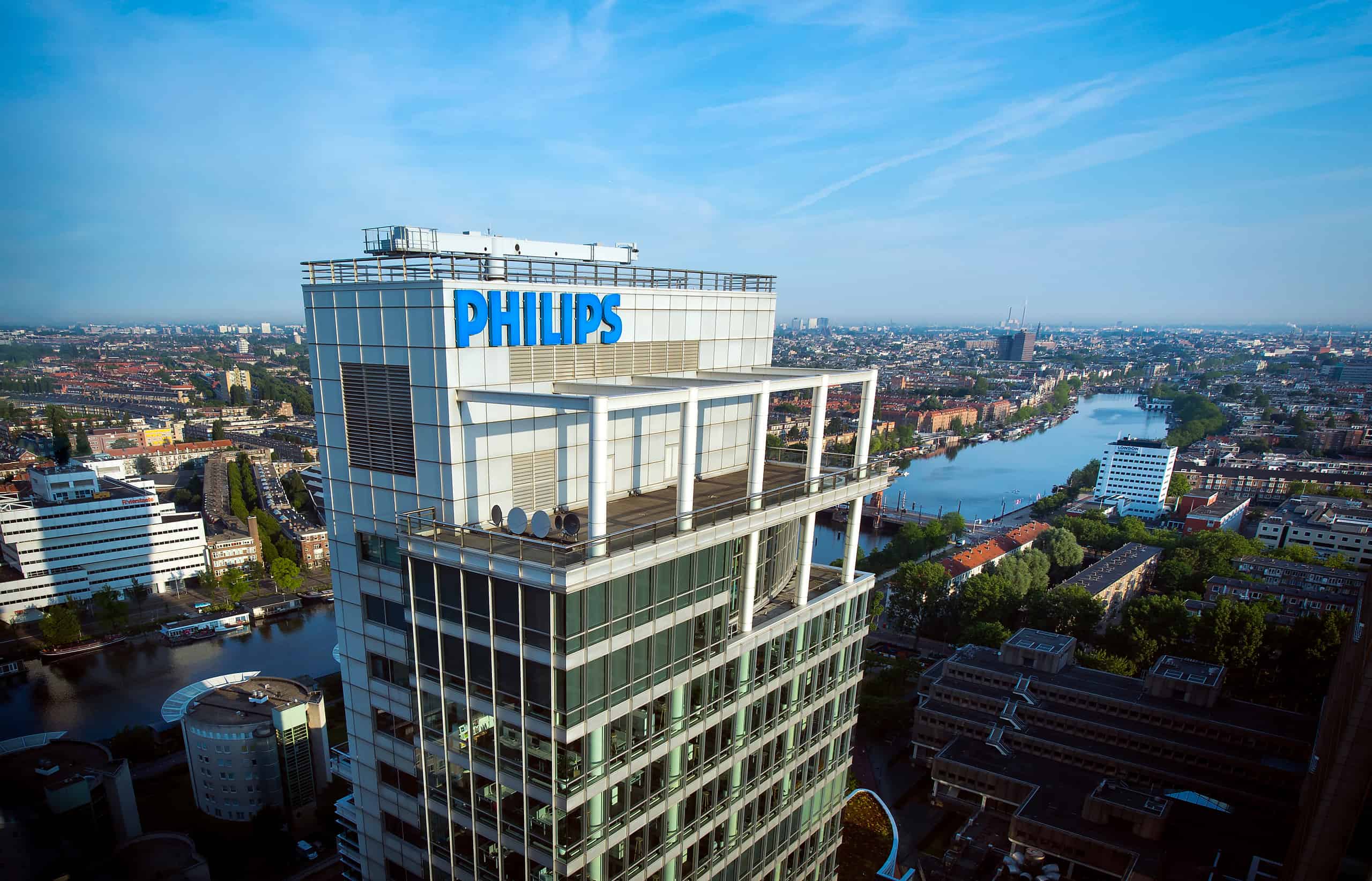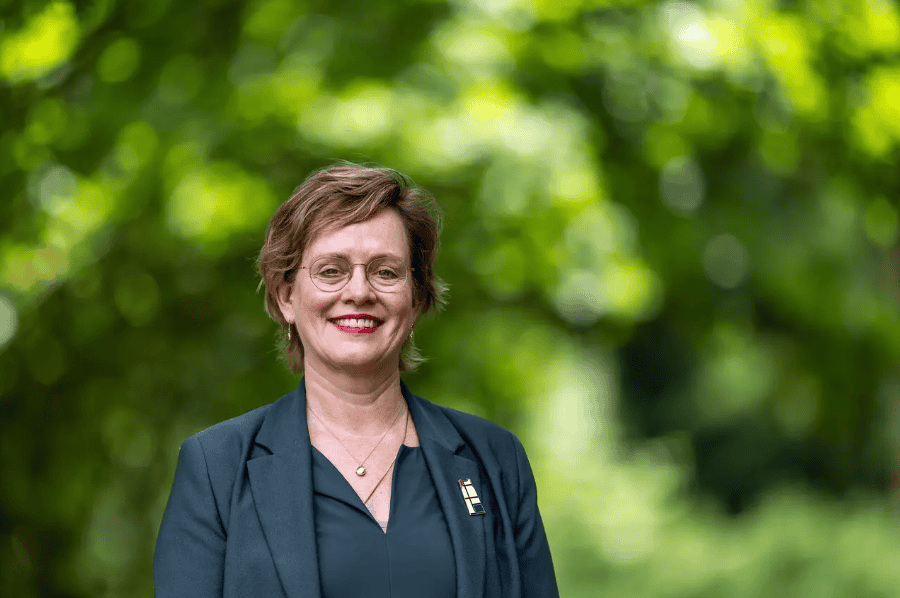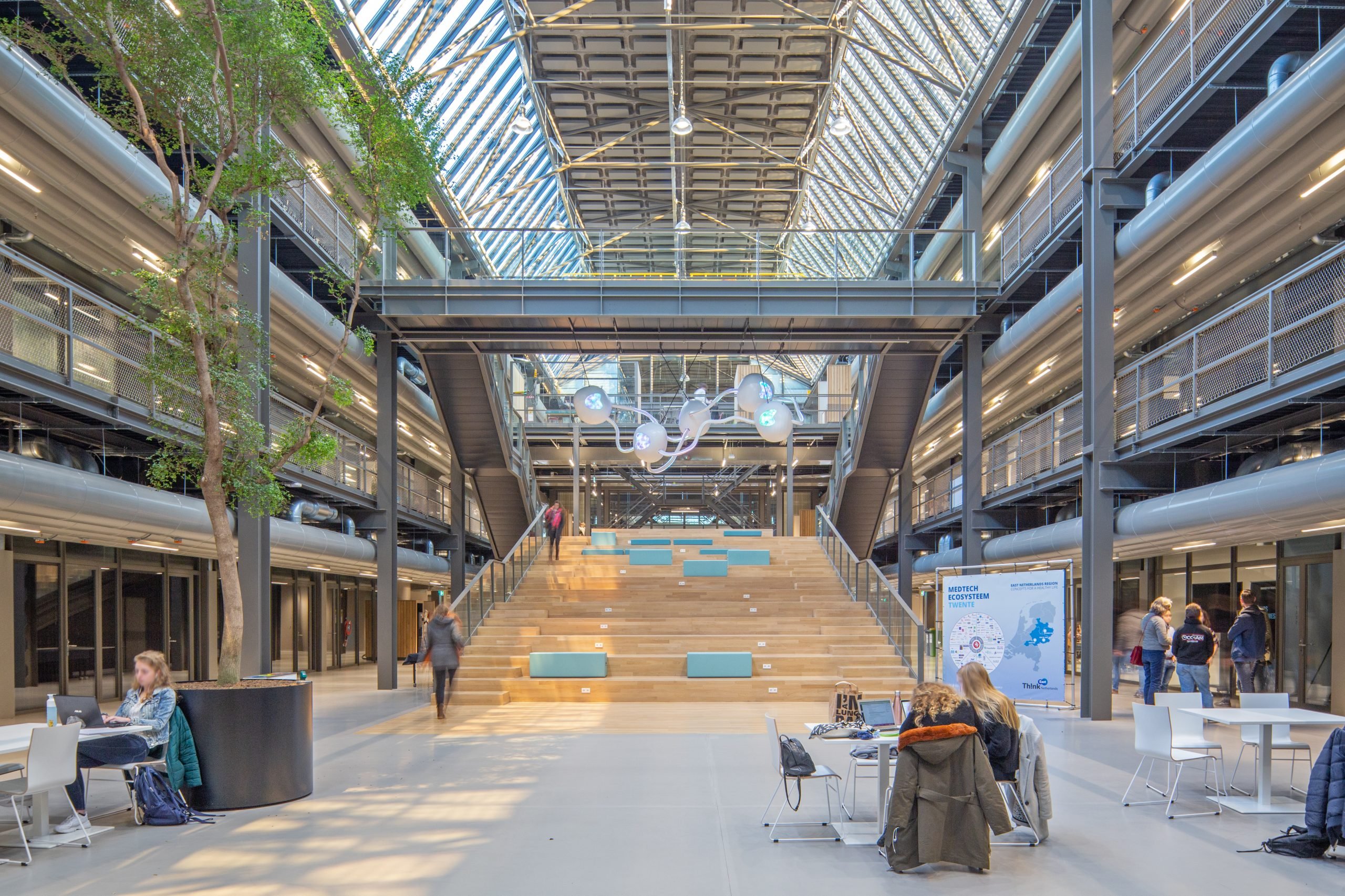
In the mid-1980s, Kennispark Twente was the first Dutch science park to focus on the combination of R&D and entrepreneurship. It turned out to be a bull’s eye. Numerous spin-offs found their way to the market, including Demcon, Xsens, Takeaway en Booking. It led to many positive effects for the region. But although Kennispark is still one of the top campuses in the Netherlands, it is in need of a facelift. The goals are clear: to create an environment where talent wants to work, with additional facilities that enable new innovations. Specific goals are a sharper focus on medical technology, a better ratio between knowledge companies and other activities, and more meeting places for students and businesses. These choices should lead to hundreds of additional jobs and the attraction of talent.
“It’s certainly not going to be easy,” says Anne-Wil Lucas, a former member of parliament and since 2018 the area director of Kennispark Twente. “But we are on the right track.” One of the challenges she faces is the fragmentation of real estate ownership. “There are about 60 different property owners at the science park, 58 of whom are private investors. That makes a consultation on the redesign of the park a tough job. Fortunately, most property owners do see the advantage of an innovation campus versus an ‘ordinary business park,’ but we have to get them to move to work on their property.”
For the cause of the fragmented ownership, she says, we have to go back to the early years of the campus, when there was not so much experience with the development of science parks. As a result, the location policy was less tightly controlled and over the years many companies have settled there that don’t really belong there. These include lawyers, consultancy firms, communication agencies, and even an orthodontist.
Lucas: “That in itself is not a bad thing, but the ratio is out of balance. There are approximately 400 companies at Kennispark, 150 of which are technology companies, and 250 of which are not. It would be nice if this ratio were to be reversed in the coming years. Because it’s precisely this concentration of technology companies so close to the university that ensures cross-fertilization and new innovations.”
Manifesto for ‘the physical aspect of innovation policy’
Co-led by Anne-Wil Lucas, the ten top Dutch campuses asked the cabinet last year “to stimulate the physical aspect of research and innovation ecosystems.” According to the campuses, the cabinet pays too little attention to this in the so-called Growth Letter that was presented to the Lower House at the end of 2019.
According to the manifesto, there should be a national investment policy for the top locations, with attention to:
A. Investments in Shared Facilities and research infrastructure
B. Investments in the accessibility of campuses and science parks including modern transport solutions
C. Funding of business developers per campus, specifically focused on crossovers
D. Intensifying collaboration of campuses, NFIA, and innovation attachés
E. Basic funding for campus organizations

What was lacking in the past, according to Lucas, were agreements with companies about park management or about contributing to a campus organization. Lucas: “Other parks, that started later, could learn from our experience and did incorporate a stricter location policy and an obligatory contribution to park management. That makes it a bit easier to stimulate cooperation. We are now trying to get the property owners and entrepreneurs to hook up and contribute to the area vision.”
Mirjam Bult, vice president of the Twente University‘s Executive Board, shares that desire. “I think we can be very proud of where we stand as Twente today, but the fact is that the world is changing and that means we, too, must constantly develop further.”
Two priorities for the university and Kennispark stand out for Bult:
- The mix could be better between knowledge companies on the one hand and leisure facilities, housing and other activities on the other.
- The economic profile of Kennispark needs to be sharpened.
The urban development plan
On the first point, the urban development plan of the municipality of Enschede offers a good start. In the next ten years, this area development can provide over 1,800 new jobs at Kennispark and another 800 indirect jobs in the region, the Enschede municipality expects. “Kennispark Twente is a true innovation campus and makes a major contribution to the ambitions of the region, province, and national government in the field of the innovative future-proof economy,” says alderman June Nods. “This is something to be enormously proud of as a city, but we must not take it for granted. We need to invest now in order to reap the benefits of this as a city and region in the future as well. The urban development plan is an important step in this.”
Among other things, the plan provides for the more physical fusion of the university on one side of Hengelosestraat and Kennispark on the other. “That should give more of a feeling of one big innovation campus,” says Bult.
“The Hengelosestraat is not a big road, but still big enough to work as a barrier. As a result, the exchange between companies and students is suboptimal.” A good example of how things could be better, according to Bult, is the building ‘The Gallery‘ on the university side. “That’s a high-tech building where students and start-up entrepreneurs mix. Exactly the way we like to see it.”
What would also be good, according to Bult and Lucas, is if there were more restaurants and cafes where students and businesses would naturally meet. The same goes for housing. “Those types of amenities create excitement and encounters,” Lucas says. And those encounters, in turn, are essential for innovation. “From research, we know that if people sit further than 40 meters from each other, the chance of meeting during the day is very small. So you need to actively create places where people can walk to and meet.”
“Often, chance encounters between companies – and between researchers and companies – lead to cross-pollination and new collaborations. Connecting and meeting are therefore guiding principles for the coming years. The urban plan provides for this.”
According to the plan, at least 100 million euros will be invested in Kennispark over the next twenty years. Among other things, there will be a new head office for technology company Demcon, the largest company in the park in terms of turnover and employees.
Choosing more carefully

With regard to Bult’s second point, she believes work should be done on a sharper profile with a focus on medical technology. “Specialization is of great importance because science parks are in competition with each other worldwide. If you want to retain companies, attract students and attract international top talent, then specialization is important.”
This is a point that René Buck, director of the economic consultancy Buck Consultants International, also addresses. He prepared a report for the municipality of Enschede last year. One of the main conclusions is that “Twente still wants to do too many things at once.”
Buck’s proposal is that Twente concentrates on three areas: medical technology, robotics, and organ-on-a-chip. The latter is a technology in which Twente is leading. In short, it is a technique in which the functioning of organs is mimicked by creating a lifelike artificial organ on a chip. This creates a test environment in which medicines can be tested and disease processes visualized. Thanks to this technology, in time animal testing may become superfluous.
Buck: “A focus on these three areas does not mean that you should exclude other sectors. It is about strengthening those domains that you are really good at. If that succeeds, you can then use that as advertising to the rest of the world.”
“We need to invest now so that we can continue to reap the benefits as a city and region in the future.”
Buck calculated several growth scenarios in his report. In the ‘plus-scenario’, knowledge-intensive employment at Kennispark Twente grows by 1,820 (+75%) jobs to 4,250 in 2030. The extra space needed to facilitate this is already in the planning, Buck writes in the report. But it will require substantial investments, including from the government. “If Kennispark Twente wants to achieve its ambitions in the coming years, it will have to set to work seriously on the preconditions laid down in the Plus scenario.”
One of these preconditions is to provide sufficient laboratory space for growth companies. The plans for the MedTech Factory, where biomedical startups from the university can rent space for further research and to bring their products to the market, is an important step in this. According to Lucas, the establishment of this lab will cost approximately 10 million euros, for which grant applications from EU funds are now underway.
Lucas: “Such a facility will ensure that the university’s spin-outs have a place to grow their business, but it will also ensure that startups from outside Twente will come and establish themselves here. We’re already seeing that movement.”
Large international companies

A second characteristic of Twente compared to, say, Eindhoven (Brainport) or South Limburg (Chemelot) is that it is home to relatively few large companies. “Eindhoven has NXP, Philips and ASML. Chemelot has DSM and Sabic. It would be nice if Twente had a few branches of large international companies in addition to companies like Demcon and Xsens.” In this respect, a welcome newcomer is the German Fraunhofer institute in Twente with a research department in the field of production technologies for smart products. “More of that please,” says Buck.
Boele de Bie, general manager of sensor technologist in motion tracking, Xsens, totally agrees. “Those big companies are important. Not only because they bring knowledge, but they also provide better access to investors. We, as Xsens, are fortunate to have a strong U.S. partner, but many other young companies don’t, and that makes it difficult to make the leap from being an SME to becoming a really big company of international repute.”
Whereas Buck points to a lack of very large companies, Demcon – the largest company at Kennispark with a total of 750 employees and expected to be 1,000 by 2025 – is well on its way to claiming that position for itself. This Twente-based global player is looking for strength in the Twente network and therefore has high expectations of the developments around Kennispark. CEO Dennis Schipper: “We see the campus as a breeding ground for a lively high-tech community around the Demcon Group. It’s all about spontaneous meeting and connecting. I am therefore a great advocate of building as many bridges as possible between the university and the science park. The stronger and the better the ecosystem, the more room it gives Demcon to help start-ups and scale-ups with a mix of experience in the field of innovation and entrepreneurship.”
The Demcon Campus should soon offer room for further growth in an inspiring work environment and will contribute to strengthening the Twente economy, according to Schipper. In doing so, he wants to “give back to the region” what he himself and his company received for many years. “We can show that it happens here. That tomorrow starts here today.” Schipper is confident that entrepreneurs and the university will join forces to renew the park step by step. “One of the sectors I expect a lot from is sustainability and green energy. Think of hydrogen and battery technology.” There is also close cooperation with the University of Münster in that area.
What is Demcon?
Demcon was founded in 1993 by Dennis Schipper and Peter Rutgers and has grown into an international company with 750 employees. It works on solutions to societal challenges in the markets aerospace, Agri & food, high-tech systems & materials, life sciences & health, smart industry, and water & maritime. It does this by developing, producing, and supplying high-quality technology and innovative products.

Xsens deliberately chose Twente and has big plans there, says general manager De Bie. “We are about to take a new building into use and a few more are definitely needed until 2025. The goal is a kind of mini-campus within the greater whole.” As far as he is concerned, however, we could think a little bigger every now and then. He also sees plenty of opportunities for more mutual cooperation. “I’m used to the situation in Eindhoven through my previous positions, where you first bake a cake together and then divide it.”
The high-tech top talents at Xsens, coming from all over the world, also like it in Twente. “The housing costs are low, the living environment is good and for us, it is quite favorable that there are fewer similar technology companies in the area. The chance of employees being snatched away is smaller this way.”
The location – a little further away from Schiphol Airport and the Randstad – is also excellent, he says. “For Americans or Chinese, the extra hour of travel time doesn’t matter. And Twente in turn has the advantage that you can get to a number of German cities, such as Berlin or Düsseldorf, faster.”
What is Xsens?
Xsens makes sensors that measure and analyze human movements. This could be, for example, in special suits or in a sports brace. The resulting images can be used, with self-designed software, for numerous applications. This could be for the production of a movie, for example, but also to help patients rehabilitate or to improve the operation of industrial machinery. Especially in the health and sports market, Xsens sees great opportunities for the use of motion capturing.

Like Demcon, De Bie also points to the ecosystem of companies and knowledge institutes as an advantage. There is a good cooperation with the University of Twente and other regional knowledge companies such as internet expert TRIMM and rehabilitation center Roessingh with their Novalab and their innovative rehabilitation technologies. According to De Bie, this is one of the reasons why Xsens has grown in 20 years to become one of the largest companies at Kennispark with approximately 150 employees and a turnover of 25 million euros. In the coming year, the tech company wants to attract another 80 new top talents.
Not losing sight of people
Bult is keen to reiterate that Kennispark Twente is above all a place to be proud of. One of her favorite developments is what she calls ‘Citizen Science‘ in the international world. “Classically, at a science park, you bring together three parties: education, government, and companies. With Citizen Science, a fourth party is added: the citizen who becomes more involved in the research and product development.”
A number of examples from Twente were featured this year in BNNVARA’s TV series “We’re going to make it“. In it, researchers from the University of Twente contacted people with a particular disability who needed help. The series included a boy with a speech impediment who was helped by scientists with a speech computer specially developed for him. In another episode, Hellen van Rees, a fashion and textile designer, and researcher at Saxion University of Applied Sciences, went to work on a custom-made coat for Nynke with a muscle disease. “It’s projects like this that make me really happy,” says Bult. “Especially when it turns out that there is a bigger market for such a product.”
Lucas is also positive about what Kennispark can contribute to the major societal challenges of the future. “During the Covid period, we saw what Kennispark is good at: quickly seeking collaboration with each other and coming up with innovative solutions. For example, in collaboration with the TechMed Center and Demcon we worked on ventilation equipment for Covid patients, Micronit and ECsens worked together on rapid tests, and the CoronaMelder-App was tested here under the supervision of Twente University. Knowing each other and meeting each other regularly makes collaboration easier and therefore brings innovations within reach. By actually setting up Kennispark as an innovation campus where that encounter is central, we can facilitate that process even better.



